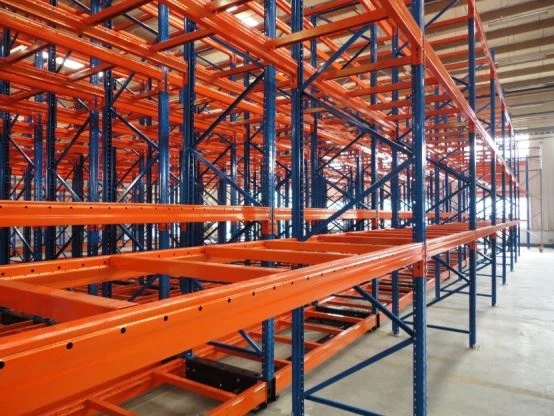The relationship between storage shelves and logistics distribution and coordination optimization methods is significant and interconnected. Effective storage shelving solutions are a critical component of logistics and distribution operations, and the optimization of these methods can greatly impact the efficiency and productivity of the entire supply chain. Here's a discussion on this relationship:
Storage Space Utilization:
Proper storage shelves can significantly impact the utilization of storage space in warehouses and distribution centers. Optimized shelving systems help maximize the use of available space, allowing for the storage of more goods and reducing the need for additional storage facilities.
Inventory Management:
Storage shelves play a crucial role in organizing and managing inventory. A well-organized shelving system allows for easy access to products, reducing the time required for order picking and replenishment.
Order Fulfillment Efficiency:
Efficient shelving and storage solutions streamline order fulfillment processes. When items are stored in a logical and organized manner, it becomes easier for workers to locate and pick items quickly, reducing order processing times.
Just-in-Time (JIT) Inventory:
JIT principles often require efficient and well-organized storage systems. Shelving that facilitates easy access to goods helps businesses maintain lower inventory levels and minimize storage costs.

Cross-Docking:
In a cross-docking environment, storage shelves may be used to temporarily store goods between incoming and outgoing shipments. Optimized shelving solutions can improve the flow and coordination of these operations.
Slotting Optimization:
Slotting refers to the process of assigning the most appropriate storage location for each item. Optimization methods can help determine the best locations for items based on their demand and other factors, leading to reduced travel time and more efficient operations.
Coordination with Picking Technologies:
Modern warehouses often use technologies like automated picking systems and robotics. The design of storage shelves must be compatible with these technologies to ensure smooth coordination and efficiency.
Inventory Accuracy:
Proper storage and labeling on shelves can contribute to inventory accuracy. Inaccurate inventory records can disrupt logistics and distribution processes.
Safety and Compliance:
Shelving systems must comply with safety regulations and standards to ensure a safe working environment. Compliance is essential for preventing accidents and disruptions in logistics and distribution.
Reverse Logistics:
Shelving systems are important in reverse logistics (returns management). They provide storage for returned items, and an organized system can speed up the inspection, sorting, and reintegration of products back into inventory.
Sustainability:
Sustainable shelving solutions, such as those made from eco-friendly materials or designed to minimize waste, align with the growing focus on sustainable logistics and distribution practices.
Real-time Monitoring and Data Analytics:
The integration of IoT devices and data analytics in shelving systems can provide insights into inventory levels, item location, and demand patterns, enabling better decision-making and coordination.
In summary, storage shelves are an integral part of the logistics and distribution process. Optimized shelving solutions can lead to increased efficiency, reduced costs, improved inventory management, and better coordination of logistics operations. By focusing on the relationship between storage shelves and logistics coordination, businesses can enhance their overall supply chain performance.